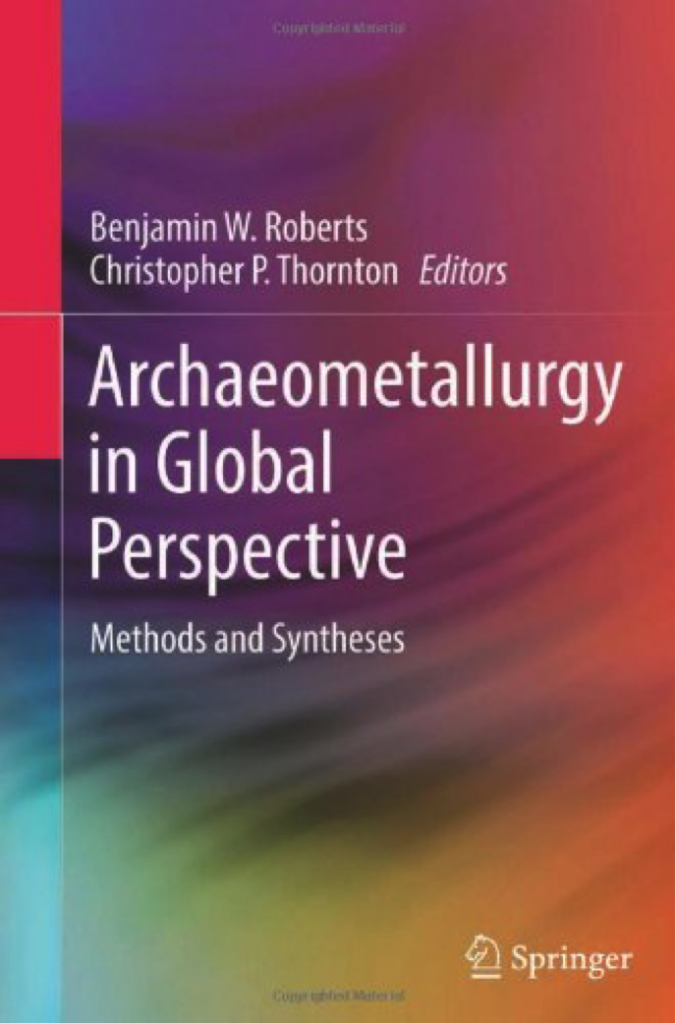Archaeometallurgy in Global Perspective: Methods and Syntheses. Roberts, Benjamin W.; Thornton, Christopher (Eds.) Springer. New York. 2014.
This volume grew out of papers from an innovative 2008 Society of American Archaeology (SAA) symposium that pulled together cutting-edge archaeometallurgical researchers to address “big” questions in the field, both theoretical and practical. The symposium was a rousing success, engaging a full house of archaeologists, anthropologists, and art historians in far-ranging discussions. The papers from the symposium were subsequently published in a two-volume edition of the Journal of World Prehistory in late 2009, and expanded upon in an Antiquity article (Roberts et al, 2009) with conclusions by Christopher Thornton and Benjamin Roberts (editors of this volume) that there was need to:
- Move beyond simplistic culture history approaches to the question of metallurgy “origins” in various regions, toward more nuanced discussions on the mechanisms of technology transfer, including notions of “innovation”, “adaptation” and “adoption”
- Study multiple ancient crafts in tandem (not in isolation) in order to form more robust models of craft production in ancient societies
- Prove, not assume, that metallurgy production was dominated by cultural elites
- Take a “holistic approach” to understanding past technologies, in which all the material remains from ancient technologies must be analyzed, including fuel, mining sites, reaction vessels, tools, waste products and finished artifacts.
In this new book, the editors added more regional syntheses and a section on methodologies to supplement the symposium papers (some revised), to make this book an accessible “reader” that is designed to teach archaeometallurgy to undergraduate students.
The first part of the volume provides introductions to specialized metallurgical research methods by some of the foremost experts in their fields. Where possible, concise bibliographies are included and are geared toward making the topic accessible to archaeological undergraduates with little or no scientific training.
The second half provides syntheses on the early development of metallurgy in various regions of the world, with emphasis on synthesizing all the literature about early metals in each area.
One of these syntheses is Chapter 28, The Transmission of Early Bronze Technology to Thailand: New Perspectives authored by Drs. Joyce White and Elizabeth Hamilton of the new Institute of Southeast Asian Archaeology. In the book introduction, the editors call this chapter “…..a stimulating paper on the possible origins of metallurgy in Southeast Asia.” and say that their “….innovative model of cultural transmission of metal technology….. provides a significant intellectual landmark in archaeometallurgy”.

